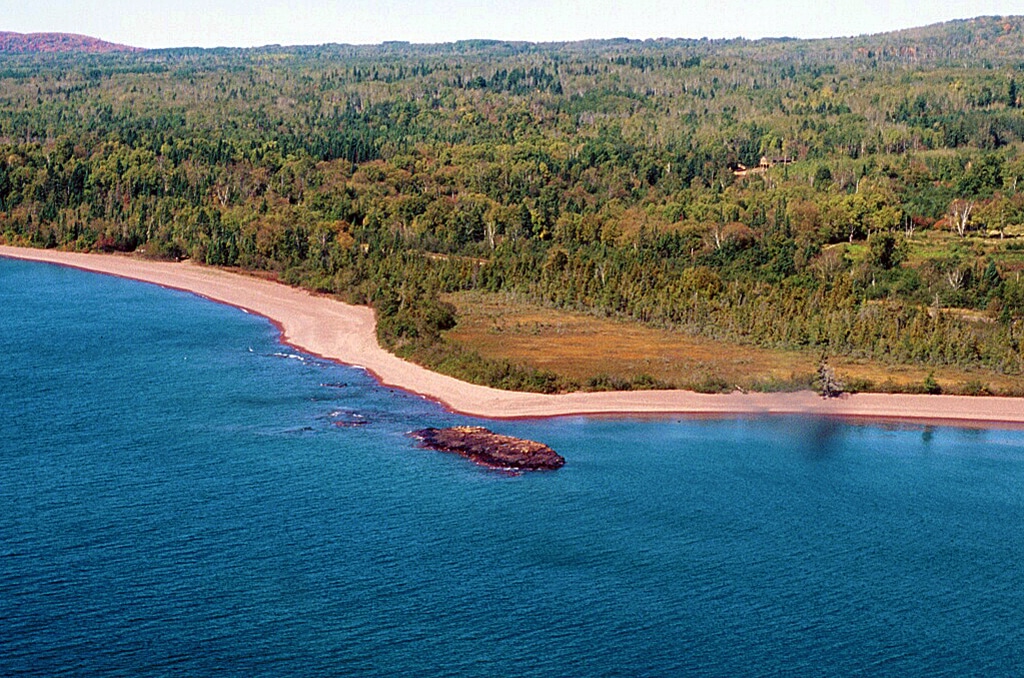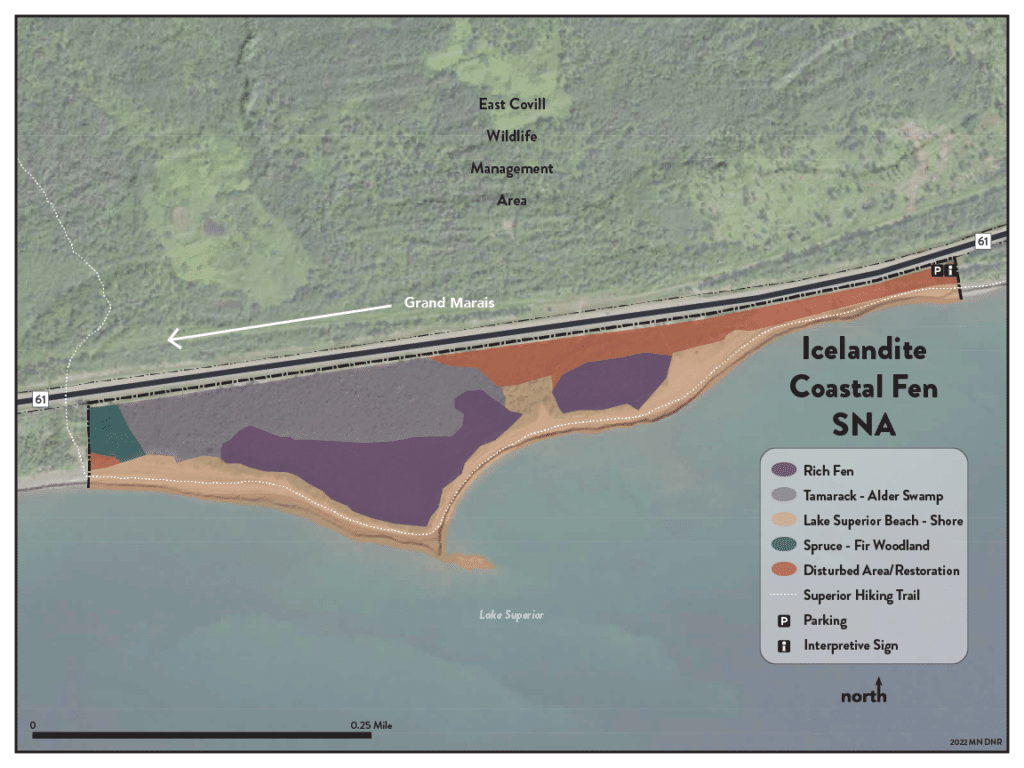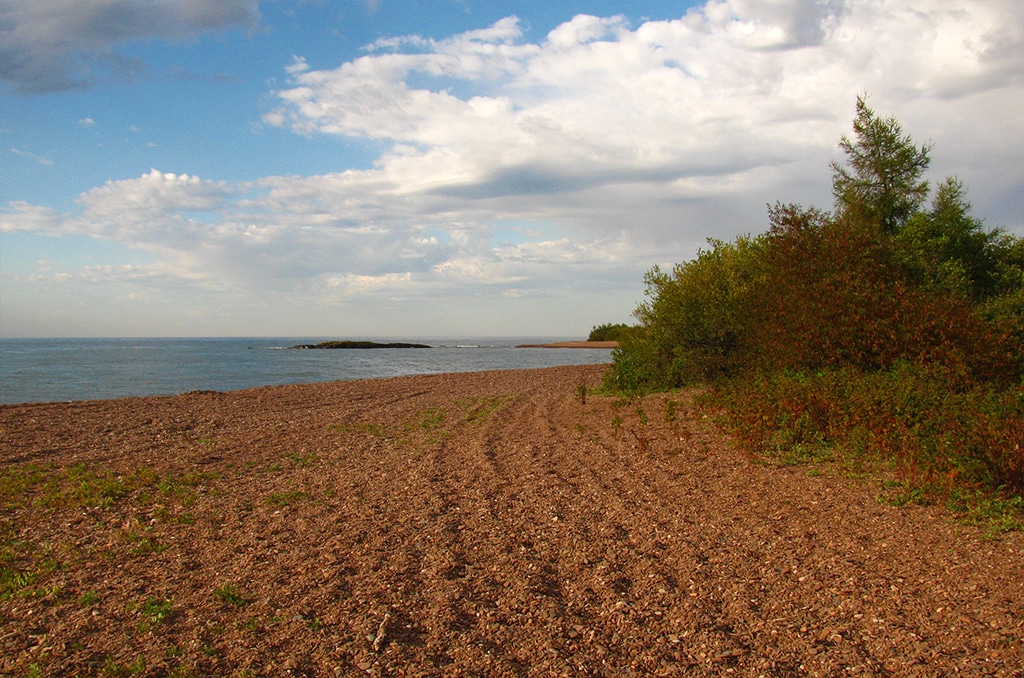
The Minnesota DNR, in collaboration with outside partners, recently acquired 25 acres in Cook County. Named the “Icelandite Coastal Fen Scientific and Natural Area” (SNA) the acreage safeguards rare species, vital wetlands, uncommon geological formations, and other significant elements of the state’s natural landscapes. The protected area stands as one of only two known fens along Lake Superior.
Located 11 miles northeast of the town of Grand Marais, the Icelandite Coastal Fen SNA is a part of the Superior National Forest. Fens are grassy or shrubby wetlands that are characterized by waterlogged soils and high organic content. They support unique plant communities adapted to wet, nutrient-rich conditions, including sedges, grasses, and mosses. While similar to bogs, fens are not as well developed. As a result, plants can acquire more minerals from the groundwater.
Furthermore, the site’s geological significance lies in its volcanic lava rock called icelandite, noted John Green Ph.D., professor emeritus in geology at the University of Minnesota Duluth. Icelandite, lighter gray than the more common dark basalt on the North Shore, formed about 1.1 billion years ago and is rare in the Midwest. Judy Elbert, SNA program supervisor with the DNR, emphasized the area’s uniqueness for both ecological and geological features, stating, “The SNA is truly exceptional.”
What is an SNA?
Scientific and Natural Areas are public lands open to recreational activities that do not disturb natural conditions. Established for their outstanding features, recreation, research, and other management activities take place in these areas.

Things to see and do
Visitors will appreciate the varied landscape that the fen offers. A segment of the Superior Hiking Trail runs along the cobble shoreline and passes alongside the wetland. Opportunities for exploration include birdwatching, hiking, and photography. Over fifty varieties of trees, shrubs, grasses, flowers, and ferns grow throughout the fen. The shore provides a good vantage point to observe the many moods of the great lake.
While visitors are encouraged to explore, there are some rules to help protect the area.
- Do not camp or collect plants, animals, rocks, or fossils.
- Do not engage in geocaching or orienteering.
- Do not use drones.
- Do not use motorized vehicles outside of the designated parking area.
- Dogs must be leashed on the Superior Hiking Trail but are not permitted within the SNA.
- Please practice Leave No Trace principles and pack out all garbage.
Preservation through partnership
The project, involving the DNR along with various partners over the past 25 years, took time to evaluate and complete.
Pat Collins, conservation program manager with the Minnesota Land Trust, reflected on the project’s origins: “When ecologists conducted an initial site evaluation in 1998, they were surprised by the quality of the native plant community and the unique setting of a rich fen on the shore of Lake Superior.”
Steve Wilson, retired SNA specialist for northeast Minnesota, said, “This ecologically unique gem combines impressive natural features not found elsewhere in the area.”
In the end, the new acquisition continues to link some of the area’s pristine shoreline. The MNDNR accomplished this project in partnership with the Great Lakes Restoration Initiative and Reinvest in Minnesota.

More info:
- Icelandite Coastal Fen SNA – MNDNR
- Minnesota has a new scientific and natural area on Lake Superior – Fox News

Wilderness guide and outdoorswoman Pam Wright has been exploring wild places since her youth. Remaining curious, she has navigated remote lakes in Canada by canoe, backpacked some of the highest mountains in the Sierra Nevada, and completed a thru-hike of the Superior Hiking Trail. Her professional roles include working as a wilderness guide in northern Minnesota and providing online education for outdoor enthusiasts.

